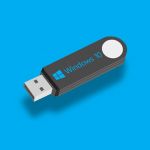Difference between revisions of "How to create Windows 10 Boot Media"
| Line 1: | Line 1: | ||
[[File:530-bootable-usb-windows.jpg|x150px|y150px|left|frameless]] | [[File:530-bootable-usb-windows.jpg|x150px|y150px|left|frameless]] | ||
| + | ==Disclaimer== | ||
| + | <b>We are not responsible for any problems that may occur during the Windows re-installation process. If you are unsure of your ability to do so then you can contact your manufacturer about doing a clean reinstall or take it to a local shop and have them do it for you. This page is strictly for information on the process of acquiring an ISO from the university and using it to reinstall Windows. You, the user, take full responsibility when performing the steps below.</b> | ||
==Making a Windows 10 USB Drive== | ==Making a Windows 10 USB Drive== | ||
Revision as of 17:13, 7 March 2022
Contents
Disclaimer
We are not responsible for any problems that may occur during the Windows re-installation process. If you are unsure of your ability to do so then you can contact your manufacturer about doing a clean reinstall or take it to a local shop and have them do it for you. This page is strictly for information on the process of acquiring an ISO from the university and using it to reinstall Windows. You, the user, take full responsibility when performing the steps below.
Making a Windows 10 USB Drive
You will need to make a flash drive in order to create a clean installation of Windows 10. This can help to resolve any issues that you may be experiencing in Windows 10 by removing corrupted files.
What you will need
1. A USB flash drive of 6GB or greater
2. Rufus software
3. Windows 10 ISO
The Rufus software can be acquired from Rufus.ie
The Windows 10 ISO can be acquired from https://oit.ua.edu/software/microsoft-azure-dev-tools-for-teaching/
How to download Windows 10 ISO
This is a video walking you through the steps of downloading the Windows 10 ISO
How to make Windows 10 Boot Media
This is a video of using Rufus to create your Windows Boot Media
What to do after
- Ensure that you have backed up all of your files on your device. It will be wiped completely clean.
- Once you have created your boot media you will need to restart your device and disable secure boot. This can be done by booting into BIOS (usually F2 but may differ by device) and going to security settings and setting Secure Boot to off/disabled.
- Next you will need to restart your device and push the button for your device that opens your boot options (you may need to google it for your device).
- Once in the boot options you will select your USB device that contains the Windows ISO (remove all other USB's drives prior to make it easier to determine which it is).
- Afterwards you can follow the on screen prompts for a clean install. Be sure to select remove everything and NOT keep my files to perform a clean install.
